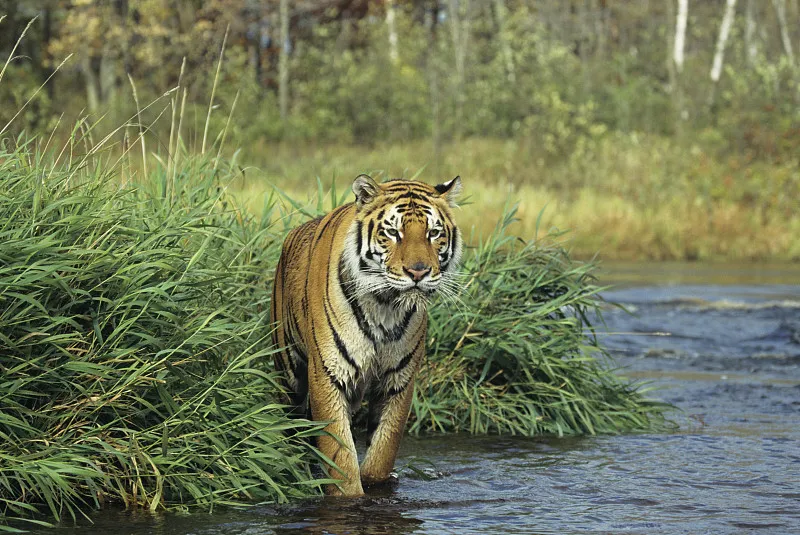





Panthera tigris altaica
Inhouse product
The Siberian tiger (scientific name: Panthera tigris altaica), also known as the Siberian tiger or Amur tiger, is the largest tiger subspecies in existence and one of the largest wild cats in the world. They are mainly distributed in southeastern Russia, northeastern China and parts of the Korean Peninsula. In China, the Siberian tiger is listed as a national first-class protected animal.
Physical characteristics: The average weight of an adult male Siberian tiger is about 250 kilograms, and the head and body length is about 2.3 meters; the average weight of a female is about 170 kilograms and the body length is about 2 meters. Their shoulder height is about 1.1 meters and their tail length is about 1.3 meters. Compared with other tiger subspecies, the Siberian tiger has lighter fur and thicker skin to adapt to the cold environment.
Living habits: Siberian tigers are mainly active at night and usually rest in caves or grass during the day. Their diet is wide, including deer, wild boars, musk deer, roe deer, gorals, weasels and other animals, and occasionally prey on snakes and fish. When food is scarce, Siberian tigers may kill livestock and may even attack humans and brown bears.
Territorial awareness: Each Siberian tiger has its own activity area and usually moves alone, except during mating and raising cubs. Their activity range is large, which is also one of the reasons for the low density of Siberian tigers. In winter, the activity range of Siberian tigers can reach hundreds to thousands of kilometers.
Reproduction and lifespan: Siberian tigers are sexually mature at around four years old and may mate at any time of the year. The gestation period is 103 to 105 days, and each litter can give birth to 2 to 4 cubs, usually reproducing every two to three years. The lifespan of wild Siberian tigers is about 15 to 17 years, and it is extremely rare to exceed 20 years; under artificial breeding conditions, the lifespan can reach 20 to 25 years, and the longest can reach 30 years.
















